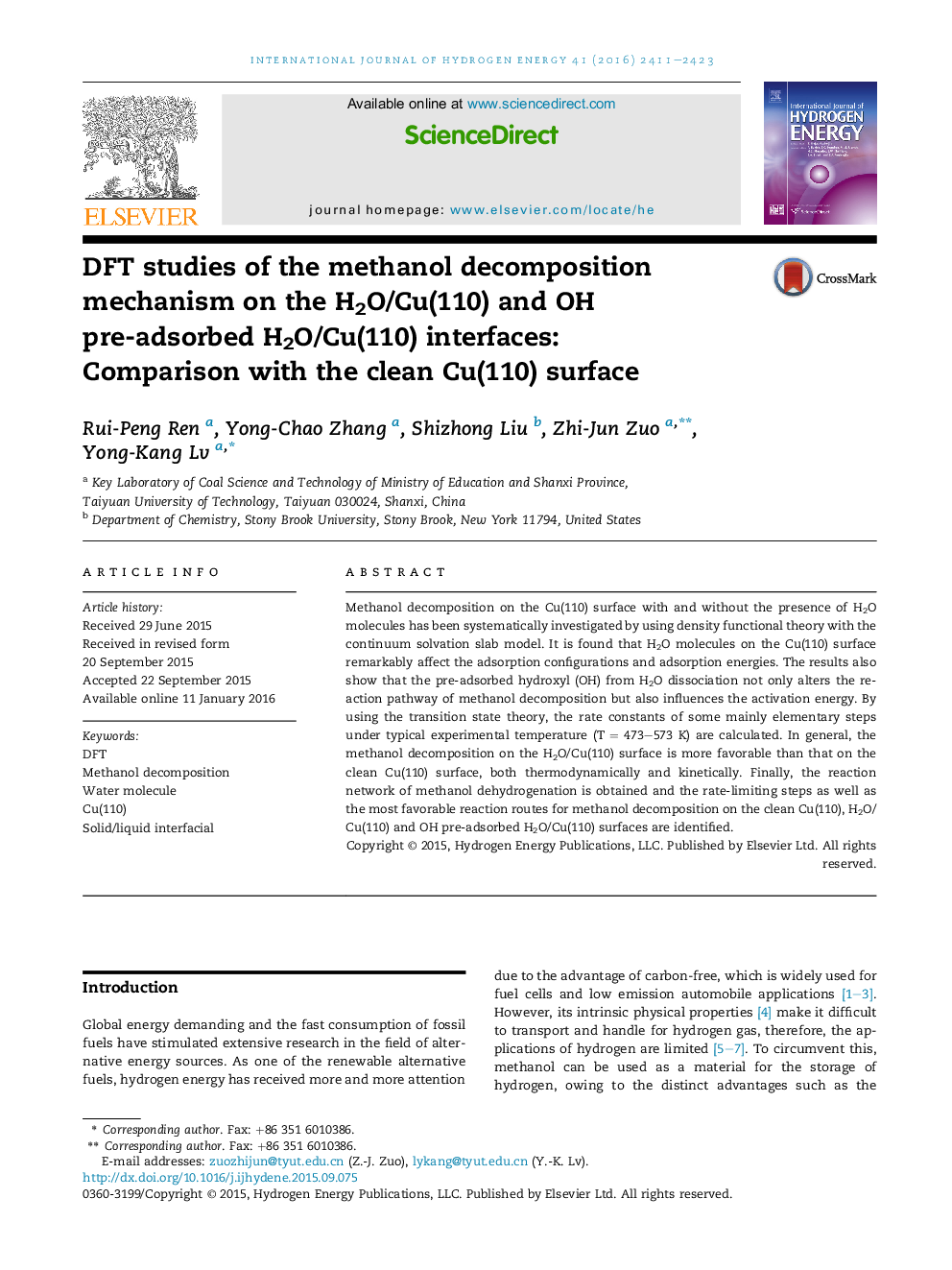| Article ID | Journal | Published Year | Pages | File Type |
|---|---|---|---|---|
| 7711854 | International Journal of Hydrogen Energy | 2016 | 13 Pages |
Abstract
Methanol decomposition on the Cu(110) surface with and without the presence of H2O molecules has been systematically investigated by using density functional theory with the continuum solvation slab model. It is found that H2O molecules on the Cu(110) surface remarkably affect the adsorption configurations and adsorption energies. The results also show that the pre-adsorbed hydroxyl (OH) from H2O dissociation not only alters the reaction pathway of methanol decomposition but also influences the activation energy. By using the transition state theory, the rate constants of some mainly elementary steps under typical experimental temperature (TÂ =Â 473-573Â K) are calculated. In general, the methanol decomposition on the H2O/Cu(110) surface is more favorable than that on the clean Cu(110) surface, both thermodynamically and kinetically. Finally, the reaction network of methanol dehydrogenation is obtained and the rate-limiting steps as well as the most favorable reaction routes for methanol decomposition on the clean Cu(110), H2O/Cu(110) and OH pre-adsorbed H2O/Cu(110) surfaces are identified.
Related Topics
Physical Sciences and Engineering
Chemistry
Electrochemistry
Authors
Rui-Peng Ren, Yong-Chao Zhang, Shizhong Liu, Zhi-Jun Zuo, Yong-Kang Lv,
